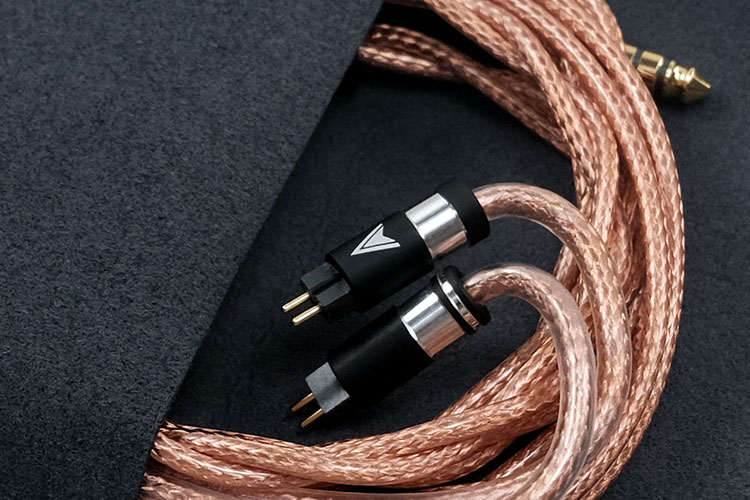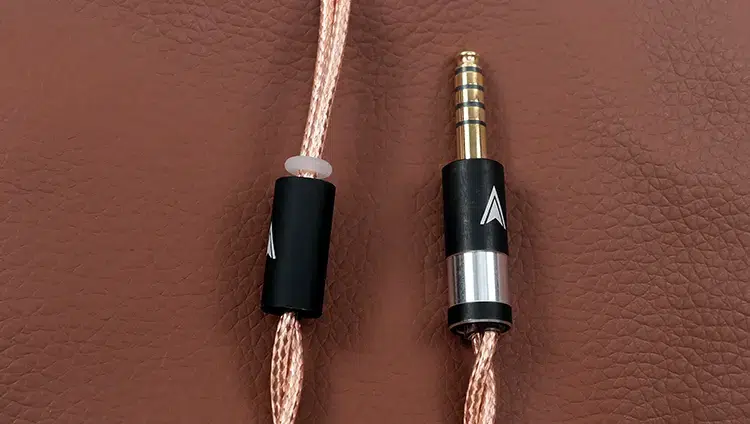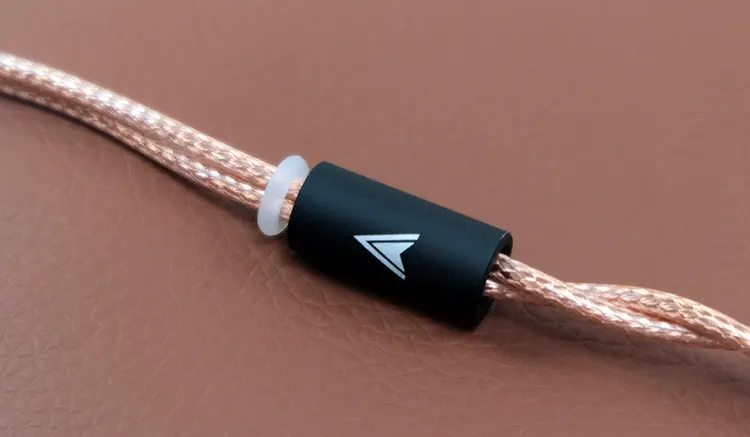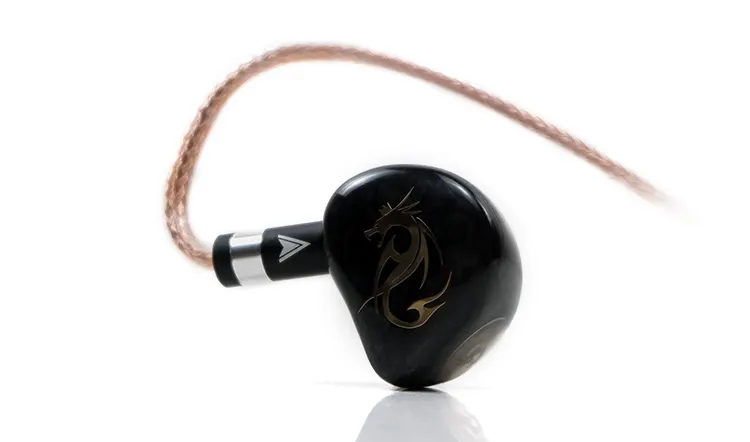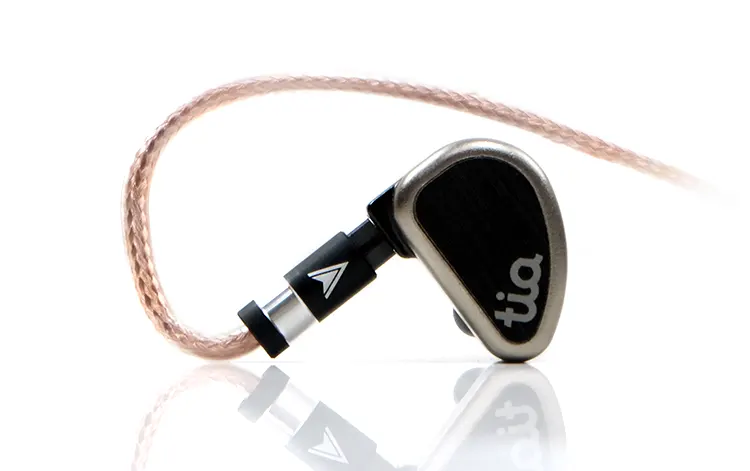In this feature, Marcus reviews the Astral Acoustics Mars, which is an aftermarket 21AWG-rated copper coaxial audio cable designed for IEM owners. It is priced at $650.
Disclaimer: This sample was sent to me in exchange for my honest opinion. Headfonics is an independent website with no affiliate status or links. I thank Astral Acoustics for this opportunity.
You can click here to learn more about Astral Acoustics products previously reviewed on Headfonics.
Note that this article follows our latest scoring guidelines which you can read in more detail here.
Astral Acoustics’ product range has grown significantly over the last 6 years from my initial meeting with the team in Hong Kong.
You can now buy aftermarket cables at price points to suit including the previously reviewed entry-level $250 25.5AWG Copper Stage 1 right up to the flagship 24AWG Silver wire Eclipse at $950.
Their latest aftermarket audio cable, Mars, sits in the middle of the range priced at $650. Its heritage ‘King Copper’ series composition is based on what the team learned from Stage 1 and Pulse combined with a more modern approach using coaxial wire geometry and larger gauge wiring.
Overall, Mars is a more detailed performer than Stage 1, offering an enhanced holographic quality while retaining the unmistakable fuller signature sound from copper wiring with our tested IEMs.
My full review below outlines its performance in more detail and how it stacks up to its nearest rivals price-wise such as Effect Audio’s Code 24, PLUSSOUND’s Quad-Copper, and Satin Audio’s Perseus.
Features
The Astral Acoustics Mars is a 5N Long Crystal OFC Copper Litz Type 2 wire aftermarket cable primarily marketed to IEM users though I am pretty sure headphone users can avail via email for a bespoke price.
The geometry of the 1.2m wire is described as a three-sized stranding coaxial design with ‘passive shielding’. The combined effective gauge is 21AWG which should help reduce the overall resistance compared to traditionally smaller 26AWG-rated cables.
This sizing and geometry means Mars has a slightly stiffer proposition than previous Astral Acoustic designs. However, the 21AWG rating is not so huge to prevent the cable from retaining a relatively pliant handling quality compared to 16AWG beasts such as Code 24.
Design
With a transparent PVC jacket, the Mars aesthetics is distinctively copper with its bright orange tones throughout.
The coppery shimmer is pleasantly accented by Astral Acoustics’ new black and silver-finished barrels which I have to say are pleasingly lighter and more distinctive than the heavier and rawer finish of the Stage 1 stainless steel barrels.
The upgrade in barrel craftsmanship gives the cable a more refined and professional look compared to Stage 1. More importantly, the lighter barrel weight means less of a pendulum-type effect when the cable dangles and reduces socket stress on dongles and DAPs.
Because of the 2-wire coaxial design, Mars is completed with a twisted effect rather than a tighter braided design. I see this finish quite often on larger gauges since the wire is too thick for tight braiding.
While a twisted finish reduces cable pliancy a little it does help keep the dimensional profile of the Mars pleasingly slim to the eye and the quality of the PVC is very soft to the touch.
The visible translucent PVC overmolds for strain relief from Stage 1 have also been vastly reduced and mostly internalized on Mars with a medium-length soft PVC memory coating doubling for strain relief near the connectors.
Finishing
You get an impressive range of termination options with the Mars cable at the website checkout. Everything from standard 0.78mm, MMCX, to more exotic options such as qdc 2-pin (inverted), and Fit Ear, with 3.5mm TRS to 4.4mm Pentaconn on the other end for the jacks.
This particular sample with me is finished with 4.4mm Pentaconn and 078mm connectors. As mentioned it’s a much smaller form factor compared to the older stainless steel barrels and dare I say it, an improved level of finishing with stronger brand accenting.
You get a similar finish also on the small splitter barrel though the PVC grommet for a chin cinch feels slightly on the cheap side for a $650 cable. It works well, I have no issues with its functionality but it is inconsistent with the styling and material choices on the rest of the cable.
Handling
The Mars two-wire twisted effect means you get an elongated finish to the cable which I normally associate with a fairly stiff articulation but in fact, Mars is relatively ‘flaccid’.
Perhaps not as malleable as Stage 1, but not as stiff as Satin Audio’s Perseus which is finished similarly. The gauge and choice of PVC here play a role in creating that type of effect. Indeed, around the ear, that spongy jacket material makes Mars a very comfortable cable to wear.
Microphonics is slightly higher than Stage 1 or other soft braided cables but that is the nature of coaxial designs. That stiffer quality invites a little more travel from physical noise but it is not something peculiar to Mars only.
Microphonics levels will depend on the level of isolation from your IEM with hybrid or semi-open universal IEMs more forgiving. Like the alternative braided designs, microphonics will be higher above the splitter.
The use of soft memory PVC coating will dampen the pressure nicely though I tend to find these springier memory molds to brush against hair a little more creating unintended microphonics. No issues though if you wear your hair short or shaved.
Packaging & Accessories
Almost everything you get in the entry-level Stage 1 accessory and packaging you also get with Mars. The only difference is the inclusion of an organizer strap with Mars.
Given the price difference, I think it might be fair to expect a bit more and I do hope Astral Acoustics can differentiate their package a bit more to enhance the higher price point perception.
That being said, Astral Acoustics always includes things I have been crying out for ages from other competing cable manufacturers including a small carrying pouch and a cable organizer strap.
I am also of the opinion that the quality of the leather chosen for Mars seems to be higher than that used for the flagship Eclipse. It feels softer to the touch with a nicer grain.
Aside from that, you get a soft black suede front flap pouch with a tie-string for closing. It allows you to roll up the cable, gently slide it in, and tie it up for carrying around. It fits neatly inside a simple cardboard black retail box with the Astra Acoustics branding to the fore.
Performance Impressions
The following performance impressions of the Astral Acoustics Mars were completed using a mix of 64 Audio’s Trio, Noble Audio Kublai Khan, and the PMG Audio Apx.
Summary
The Astral Acoustics Mars is the perfect companion for smoothing out otherwise lean, analytical, or bright-sounding monitors.
It has a noticeably euphonic coloration throughout with excellent staging width on my tested IEMs. Vocal imaging seems relatively neutral creating a stronger perception of space between you and the performance stage.
A good example of the above is Noble Audio’s Kublai Khan. This is a weighty performer on the lows but leaner through the mids with a stronger treble overtone courtesy of a 5-6k peak.
Paired with a neutral and slightly mid-forward DAP like the HiBy R8 II it can sound peaky on percussion hit with more vocal sibilance with bright recordings.
Copper tables such as PLUSSOUND’s Quad Copper and Satin Audio’s Perseus will generally sweeten the tone and add some welcome density but still sound relatively neutral compared to Mars. That aggression from the Kublai Khan largely remains intact.
Not so with Mars. Its performance is full throughout, which, combined with more liquid leading edges, takes the sting out of the upper mids and treble, transforming it into an airy, smooth-sounding monitor.
There is also the additional bonus of improved body and warmth from the lows leading into the mids to beef up what is normally a thinner tone, one I would classify as exciting but at times edgy.
You get a similar effect with 64 Audio’s Trio though I prefer Effect Audio’s Code 24 on the lows. The additional gauge weight and SPC wire offer more dynamic range and definition giving the Trio a tighter and slightly deeper sound.
Still, the Mars/Trio smooth rich transformation through the mids and highs is very noticeable. Treble decay lingers longer but it’s a sweet enveloping sound rather than a hard-edged unsettling tone.
Coloration
With my tested IEMs, Mars introduced 3 noticeable changes in their coloration, namely low-end body, midrange warmth, and a more relaxed set of highs.
I want to caveat with a note on sub-bass density in dynamic driver IEMs. Mars is not quite as tight-sounding as alternative options such as PLUSSOUND’s Quad Copper.
Rather Mars offers a comparatively languid bass presentation, with enhanced bloom and warmth giving IEMs such as Trio and Kublai Khan a pleasing fuller sound but perhaps at a slight cost of note definition.
Midrange timbre is liquid and smooth with an excellent note body, perhaps one of the fullest-sounding copper cables I have heard to date. It’s transformative with the Khan and one of the most pleasing combinations I have found for its bigger sibling, the Viking Ragnar.
It is slightly softer on note leading edges compared to SPC alternatives such as Effect Audio’s Code 24. SPC wire tends to produce more contrast from an IEM’s treble region which is easily picked up on both the Apx and Khan during my testing.
There is less of that from Mars which keeps a relatively full tone in the highs but reduces upper-order harmonics influence on the tonal quality from upper-register notes.
That’s a great combination for reducing the potential for a hard-edged set of upper-mids from the Apx or Khan, especially when paired with clean-sounding and highly-resolving sources such as the iBasso DC-Elite.
However, it can dull the sparkle of percussion hits and higher-register synth notes in the process which some IEM owners might wish to retain.
Staging & Dynamics
Despite the relaxed treble, Mars delivers an atmospheric quality to its soundstage performance, retaining excellent dynamic range with my tested IEMs. Particularly so for staging width, doing an excellent job filling out the PMG Audio’s Apx expansive soundstage.
It is not quite as holographic as Code 24 though the additional contrast from its SPC wire and larger gauge will increase the dynamic range, introducing a cleaner tone that can enhance the perception of subtle staging cues.
Compared to Quad Copper and Satin Audio’s Perseus, my paired IEMs sounded more expansive with both competing cables producing a slightly narrower soundstage quality. I would rate the Perseus as the taller of the two for staging headroom with the Mars deeper and slightly wider.
Mars’s vocal positioning is relatively more relaxed when compared to the above cables, creating a stronger perception of distance from my listening position to the front of the stage.
It also allows background instruments to move further to the fore, enhancing that wide staging quality in the process.
Click on page 2 below for my recommended pairings and selected comparisons.

